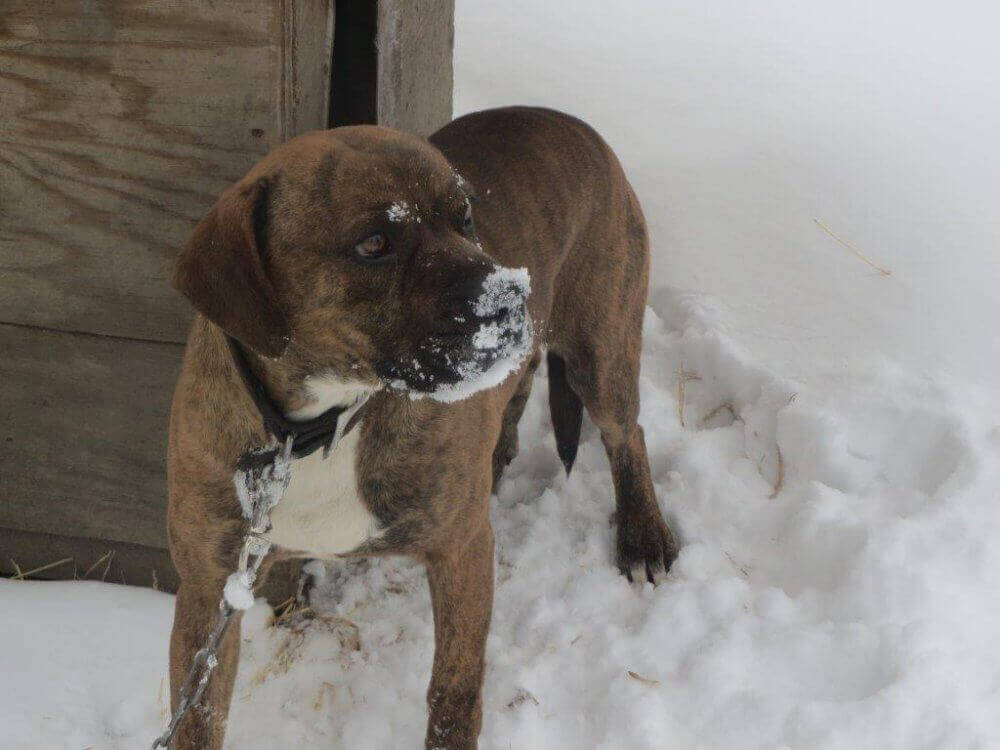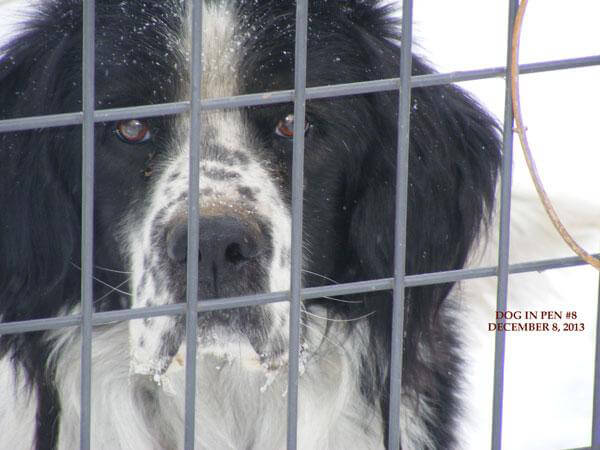Cats Lose Tips of Their Ears in the Cold
Her name is Sunny, and at a year old, she weighs just 2½ pounds, or roughly the weight of a 10-week-old kitten. The tips of her ears froze off in the cold, and she suffered greatly, but she’s alive today only because alert Chicago city workers spotted her and took her to an animal shelter, where she’s being nursed back to health.
Sunny is just one of thousands upon thousands of stray, feral, and “backyard” cats and dogs across the country whose bones ache from the cold and who are struggling to survive the blasts of Arctic weather coming their way. A cat in Michigan also lost the tips of her ears to frostbite, and a kitten in Nebraska had to have part of her frostbitten tail amputated. In addition to being extremely painful and leading to the loss of parts of ears, tails, noses, toes, and feet, frostbite can also be fatal if injured limbs later become infected.
Animals left outside during the freezing cold also suffer from potentially deadly hypothermia and dehydration when water sources freeze. In November, a cat who had apparently been part of a “managed feral colony” in Philadelphia was found dead during a cold snap. A woman who regularly feeds cats at the site said that finding dead cats isn’t unusual. “”They starve while shivering so much,” she said. This is the fate of so many cats put outside, especially in feral colonies in “concrete jungles.”

PETA’s fieldworkers encounter animals all winter long who are suffering terribly from the cold. Many dogs are chained outside 24 hours a day, sometimes with nothing more than a card table, a plastic carrier, or an overturned barrel for shelter (if they have any shelter at all—and they don’t when their chain becomes twisted and tangled and they can’t reach it). Earlier this week, a dog named Peanut was found frozen to the ground in Indiana. A sheriff’s deputy worked for half an hour to free him. In another case, an elderly dog who had been left outside with insufficient shelter during a snowstorm in Nebraska was found with icicles hanging from his face.

Dogs and cats may have fur coats, but they are not immune to the cold—especially short-haired dogs, such as pit bulls, dachshunds, Dobermans, Chihuahuas, and beagles—any more than a person wearing a coat would be immune if he or she were to sit outside on the frozen ground all day. Young, elderly, and small dogs are also highly susceptible to the cold.
What You Can Do
If you spot any stray or loose animals, get them indoors where they will be safe. If your local shelters have adopted “no-kill” or trap-neuter-release policies and refuse to accept strays or ferals, remind them that animals will die in the cold if they do not have a warm, safe place to go, and urge them to reverse these misguided policies. Keep an eye out for “backyard dogs,” too. It’s vital that dogs have fresh water and plenty of food. (Their bodies burn extra calories in the winter in an effort to keep warm.) Urge dog owners to allow their dogs indoors, and alert authorities immediately if you see a dog who is being denied adequate food, water, or shelter. If you don’t get results, call PETA.

